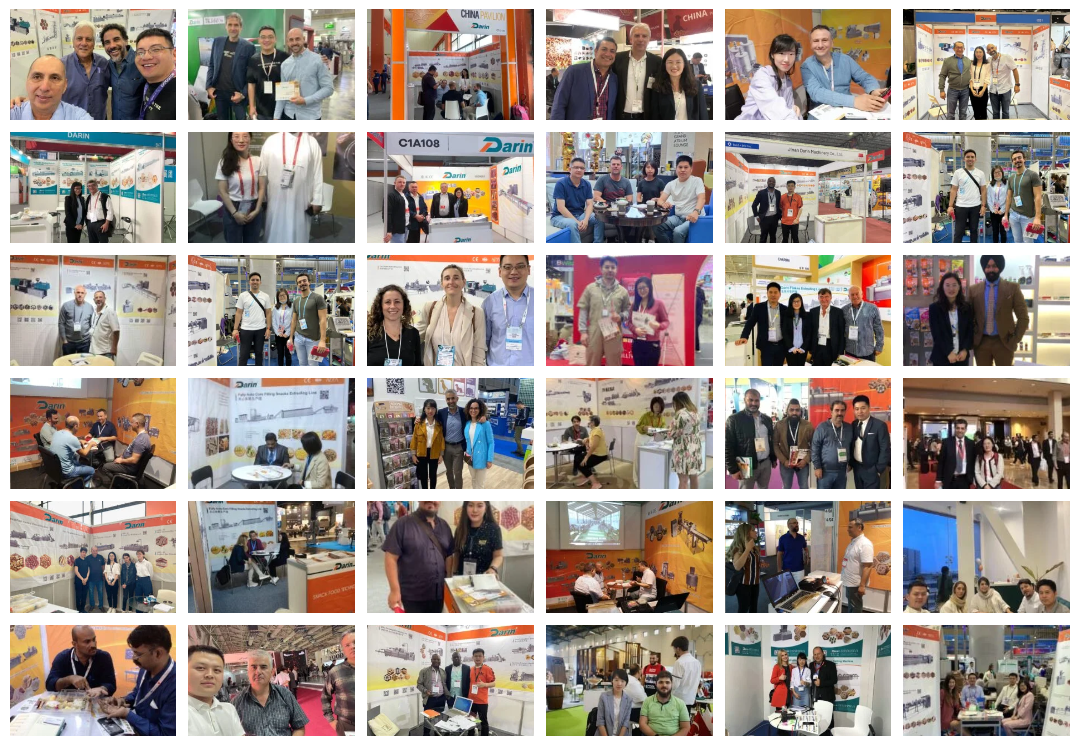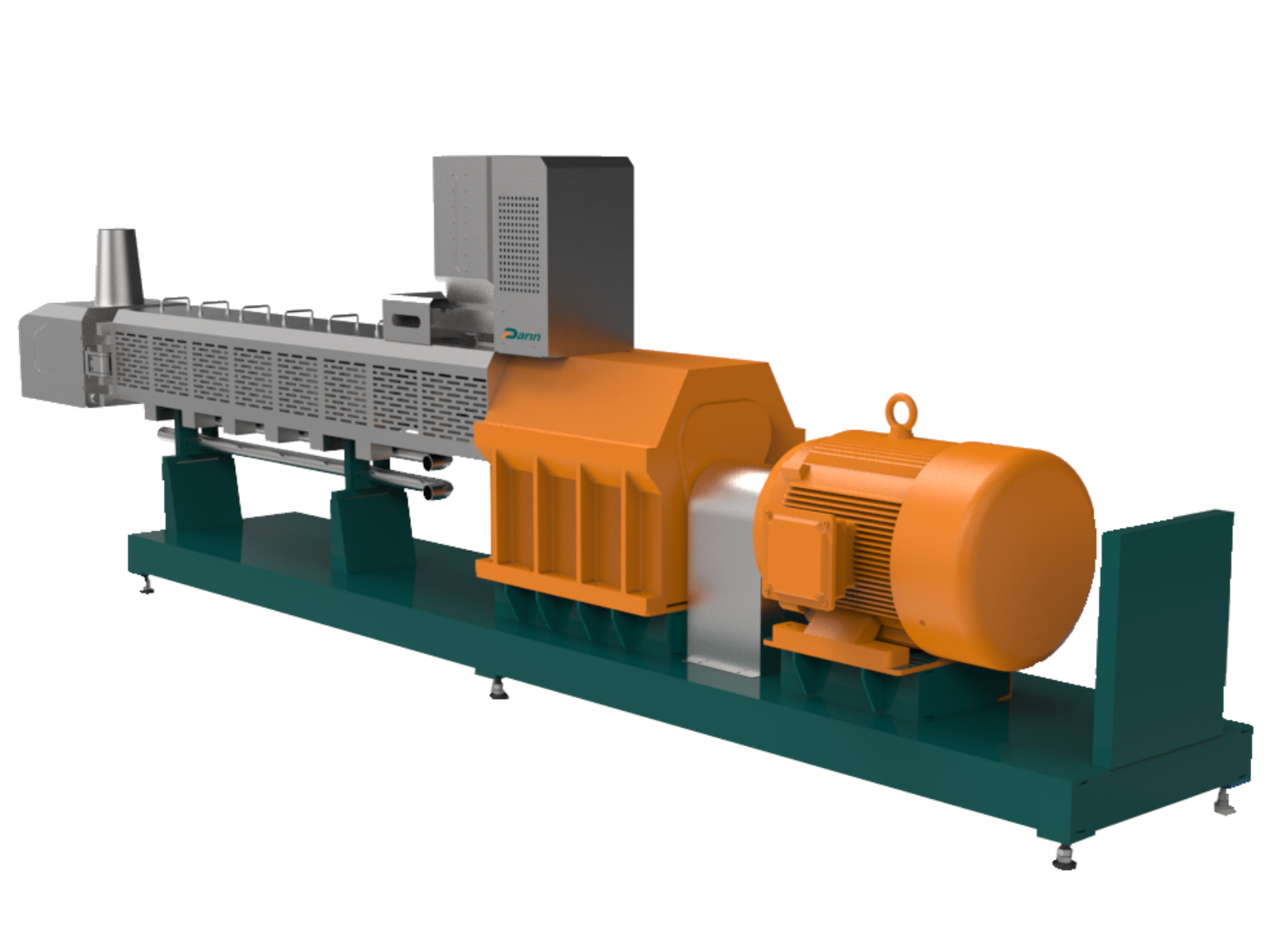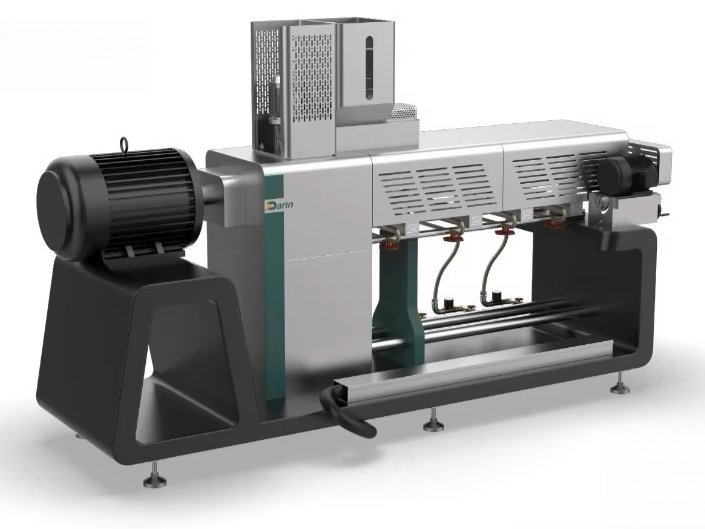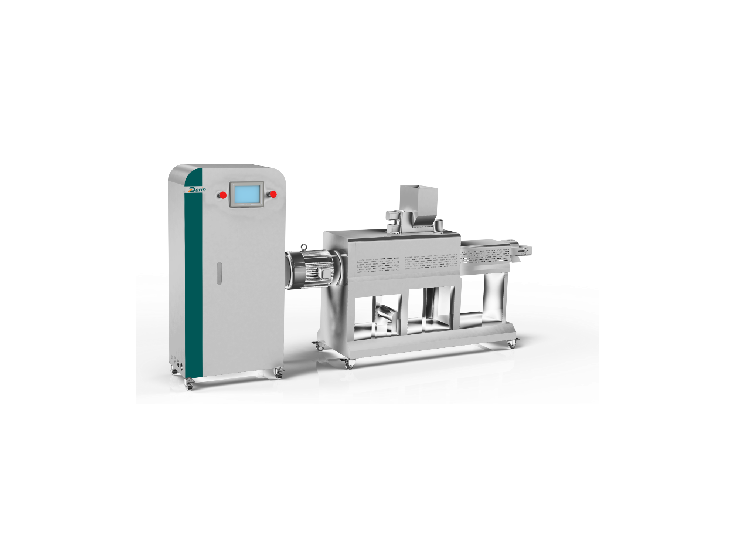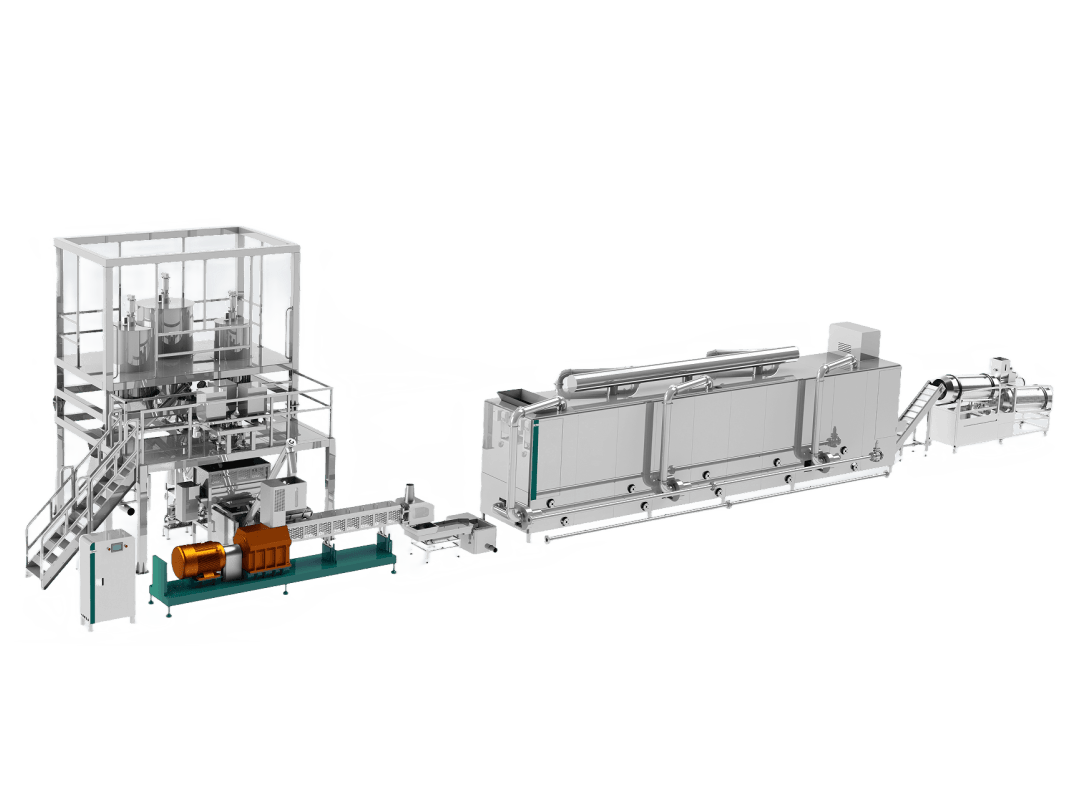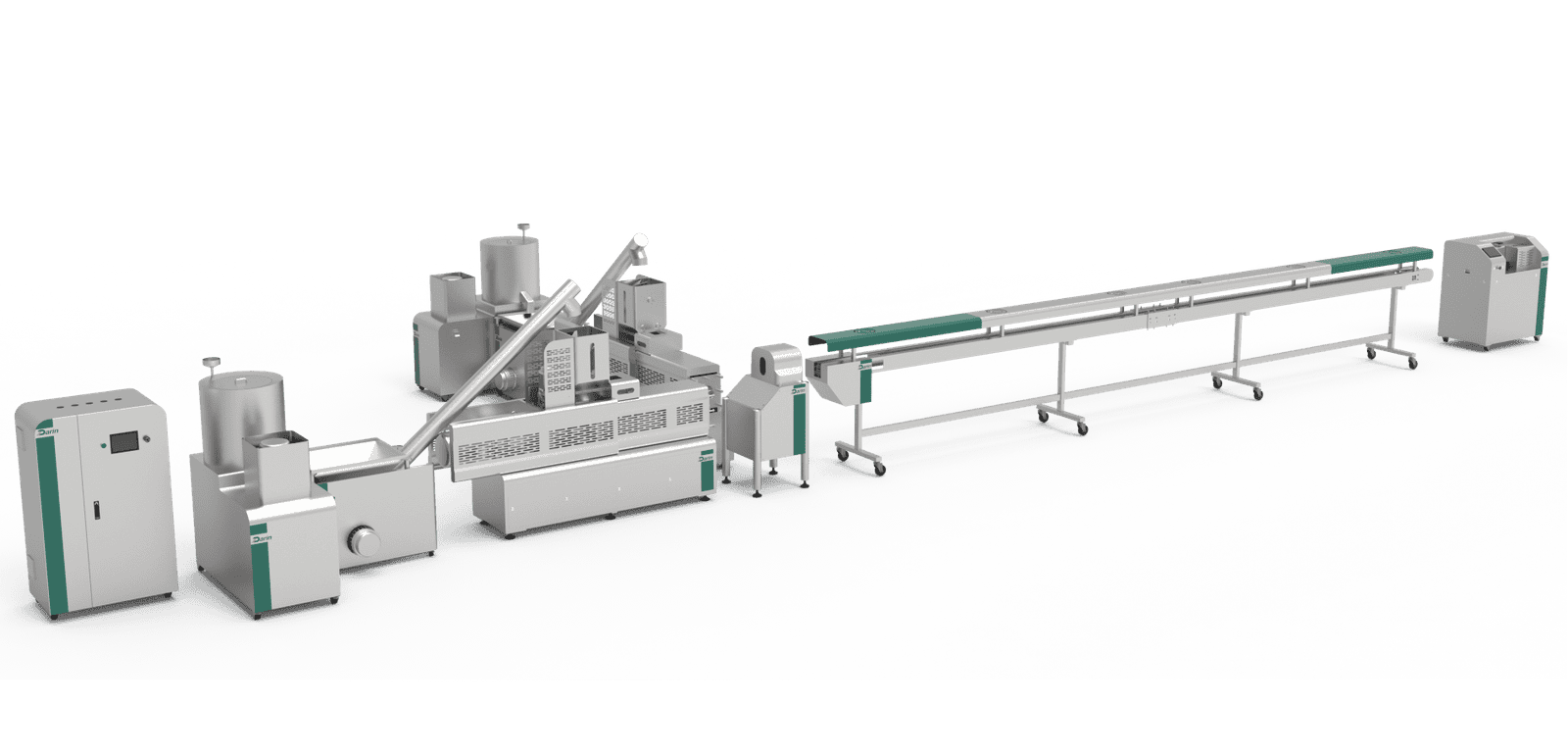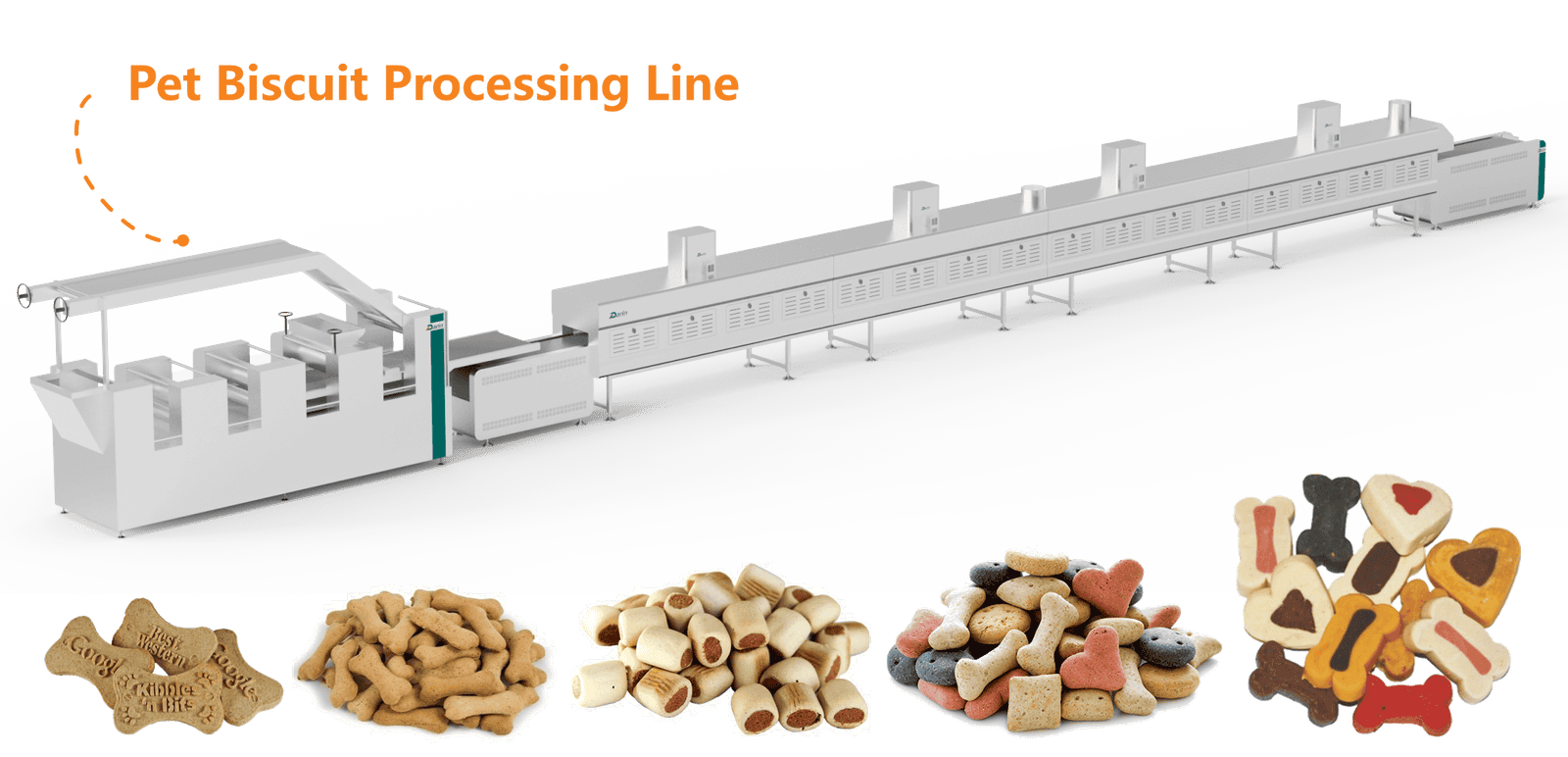
Dog biscuit manufacturers—whether start-ups scaling from craft batches or global brands rationalizing multi-plant networks—often run into the same pain points: inconsistent dough sheet and piece weight, cracked or puffed biscuits after baking, high breakage during cooling and packaging, oil spray variability causing rancidity or greasy surfaces, and energy-hungry ovens that become the cost center of the entire facility. The consequences are expensive: wasted raw materials, recalls driven by density or size non-conformance, downtime for cleaning and changeovers, excessive WIP tied up in long cooling queues, and a P\&L hammered by utilities. The solution is not a single “magic” machine, but a coherent, hygienic, and digitally controlled dog biscuit production line—engineered as a system. In this guide, I’ll walk you through every workstation (from ingredient reception to case packing), explain the science behind dough development and moisture management, quantify energy and OEE, and show how Darin Machinery integrates mixers, sheeters/laminators, rotary moulders, tunnel ovens, oiling/glazing, cooling, inspection, and packaging into one reliable line. You’ll leave with design criteria, parameter ranges, capacity models, and QA checkpoints you can apply immediately—whether you’re buying your first dog biscuit making machine or upgrading a legacy line.
A modern dog biscuit production line is an end-to-end, food-grade system that converts dry and liquid ingredients into formed dough pieces, bakes them to a target moisture and water activity, optionally oils or glazes the surface, cools them to packaging temperature, inspects for metal/weight/geometry, and then bags and cases the finished treats; core equipment typically includes a high-shear or horizontal mixer, dough resting and lamination/sheeter section, a rotary moulder or wire-cut/embosser for shape definition, a multi-zone gas or electric tunnel oven, an inline oil sprayer or glazing station, a spiral or ambient cooling conveyor, checkweigher plus metal detector, and VFFS or pouch packing—coordinated by PLC/SCADA with recipe control, traceability, and CIP-friendly hygienic design.
If you’re looking for a crisp, turnkey answer—jump to the “Process Flow & Parameters” and “Capacity & Energy” sections below. If you want to design a line that holds its tolerances for years, keeps sanitation time short, and passes every third-party audit, keep reading: I’ll explain not only what to buy, but exactly why each upstream decision (like dough moisture or sheet reduction ratio) makes the downstream line calmer, cheaper to run, and more profitable.
Rotary moulders are the dominant forming technology for classic dog biscuits.True
Rotary moulders provide stable weight control, sharp embossing, and high throughput for low-moisture, low-fat dog biscuit doughs compared with wire-cut for soft doughs.
Tunnel ovens always need more than three zones to bake dog biscuits properly.False
Two to three thermal zones typically suffice for most biscuit SKUs when humidity management and band speed are correctly tuned; additional zones add flexibility, not necessity.
What exactly counts as a “dog biscuit production line”?
From a food engineering standpoint, “dog biscuit production line” (sometimes called a dog biscuit making machine line or pet treat biscuit line) is a sequence of unit operations designed to produce baked, crunchy, low-moisture pet biscuits. It is distinct from extruded kibble (expanded by twin-screw) and from soft/chewy treats (often wire-cut and lower bake). A complete line integrates:
- Ingredient handling: flour/meals, starches, fibers, protein meals, fats, sugar/syrups, leaveners, emulsifiers, palatants, minerals/vitamins, water.
- Mixing: horizontal sigma or planetary mixers; target dough temperature 22–28 °C; hydration uniformity within ±0.5% moisture.
- Dough rest & make-up: bucket elevators to a sheeter/laminator, rough sheet at 6–15 mm then reduced to final gauge; dusting flour minimized to reduce sanitation load.
- Forming: rotary moulder (barrel with cavities) or alternative forming (wire-cut/embosser) shaping biscuits, often with brand emboss.
- Baking: tunnel oven (direct gas-fired, convection or hybrid) with 2–3 zones; manage heat and humidity to hit core moisture \~6–9% and aw 0.30–0.45.
- Oiling/Glazing: post-bake oil sprayer or palatant drum (optional) for shine and aroma without exceeding surface oil spec.
- Cooling: ambient or spiral cooler to <35 °C product temperature to avoid condensation in pack.
- Inspection & packaging: checkweigher, metal detector, vision (optional), VFFS or pre-made pouch, gas flush if required, and case packing.
- Automation & QA: PLC/HMI with recipe control, historian, OEE dashboard; HACCP with CCPs at metal detection and baking (kill-step validation).

Key ingredient functions at a glance
| Ingredient (dog biscuit) | Typical Range (% flour basis) | Function | Notes for process stability |
|---|---|---|---|
| Wheat flour or mix | 100 (basis) | Structure (gluten), machining | Choose ash 0.55–0.65% for light color, protein 9–11% |
| Starch/cereal meals | 5–25 | Texture, spread control | Rice/corn for crispness; adjust water accordingly |
| Sugar/syrup | 2–10 | Browning, palatability | Syrups raise reducing sugars; watch oven color |
| Fats/oils | 2–8 | Tenderness, aroma | Higher fat softens dough; reduce lamination pressure |
| Leaveners (soda, SALP) | 0.3–1.2 | Porosity, crunch | Balance with acidic components; profile across zones |
| Salt/minerals | 0.5–2.0 | Flavor, nutrition | Screen to avoid metering surges |
| Fibers (cellulose, beet) | 1–8 | Dental/claim texture | Increases water binding; extend mix by 30–60 s |
| Proteins (meat meals) | 2–12 | Nutrition, color | Darkens bake; lower oven radiant fraction |
| Palatants (surface) | 0.2–2.0 | Aroma/acceptance | Apply post-bake to avoid volatilization |
| Water | q.s. to 18–22% dough moisture | Hydration | Tighter control = tighter weight in moulder |
Process flow & parameter window (how it actually works)
A dog biscuit manufacturing line is a chain; any weak link will broadcast variability downstream. Below is a practical parameter guide that Darin Machinery uses when we commission a rotary-moulded biscuit line. These are starting windows—your exact recipe and environment will fine-tune them.
| Unit Operation | Setpoints / Targets | Engineering Notes |
|---|---|---|
| Dry & liquid dosing | ±0.2% mass accuracy | Loss-in-weight feeders reduce drift on long runs |
| Mixing (horizontal) | 6–9 min total; final dough temp 24–27 °C | Stage water into 2–3 additions to avoid lumps |
| Dough rest | 5–15 min covered | Equalizes moisture; improves sheet uniformity |
| Sheeter/laminator | Reduction ratio 3:1–5:1 to 3–6 mm | Avoid >30% rework to limit over-developed gluten |
| Rotary moulder | Vacuum 20–40 mbar; fill factor 85–95% | Keep dough consistency in ±0.5% moisture for weight |
| Tunnel oven—Zone 1 | 200–230 °C; RH low | Set structure; avoid blistering with balanced top/bottom |
| Tunnel oven—Zone 2 | 180–210 °C; RH medium | Drive off moisture; target exit moisture 6–9% |
| Optional Zone 3 | 160–190 °C or dry-out | Color control; equalize core/surface |
| Oil/glaze | 0.3–1.0% add-on | Air-assisted nozzles; verify droplet size distribution |
| Cooling | To <35 °C product | Spiral or ambient; dwell 6–18 min |
| Metal detect | Fe 2.0 mm, Non-Fe 2.5 mm, SS 3.0 mm typical | Validate daily with test wands |
| Packaging | Bag weights ±1.5% | Use checkweigher feedback to filler for drift control |
Why rotary moulder for dog biscuits?
For low moisture, low fat, stiff doughs, rotary moulders deliver: (1) sharp embossing for brand visibility, (2) tight piece weight via vacuum-assisted cavity fill, (3) high throughput (often 300–1,200 kg/h on a single 1,000–1,200 mm band), and (4) gentle handling that protects edges before bake. Wire-cut shines for soft, high-fat, inclusions-rich doughs, but for classic bones/paws/coins, rotary is king.
Line architectures you’ll actually see on the plant floor
Compact line (up to \~300 kg/h)
- 300 L horizontal mixer → rest hopper → single-stage sheeter with gauge rollers → rotary moulder (400–600 mm wide) → 18–24 m direct-gas tunnel oven (2 zones) → inline oil sprayer → 8–12 m ambient cooler → checkweigher + metal → VFFS.
- Footprint: \~35–45 m line length.
- Utilities: 150–250 kW oven burners; 10–20 kW drives; 6–8 bar compressed air.
Mid-range line (500–800 kg/h)
- 600–1000 L mixer (tilting bowl) → lamination with 2–3 reductions → rotary moulder (800–1000 mm band) → 30–45 m hybrid oven (convection + infrared) 2–3 zones → drum coater or oil spray → spiral cooler → dual baggers.
- Footprint: 60–80 m.
- Utilities: 400–700 kW oven; centralized CIP for oil spray cabinet; heat recovery on oven exhaust.
High-throughput line (1–2 t/h)
- Continuous mixer or two alternating 1,200–1,500 L batch mixers → 3-station lamination → twin rotary moulders for parallel SKUs or wide die → 60 m multi-zone oven with humidity control → flavor drum + oil → enclosed spiral cooler (hygienic air) → multi-lane weighers → case packer.
- Footprint: 100 m+.
- Utilities: 1–1.5 MW oven input; segregated allergen rooms; SCADA with historian.
Oven technologies compared (choose what fits your SKUs and energy reality)
| Oven Type | Heat Transfer | Pros | Cons | Best For |
|---|---|---|---|---|
| Direct Gas-Fired (DGF) | Radiant + convective | Fast response, strong color, robust | Potential NOx; careful humidity control | Browned, embossed, classic bones |
| Convection (indirect) | Forced hot air | Even bake, moisture control | Slower color; higher fan power | Light-colored biscuits, multi-SKU |
| Hybrid (IR + conv.) | Surface IR + air | Sharp color + even core | More complex to tune | Embossed shapes needing crisp edges |
| Electric | Radiant (resistive) | Precise control, low local emissions | Energy cost (region dependent) | Small/medium plants with green power |
Pro tip from commissioning: most “mysterious” cracking issues originate upstream—dough moisture variation or poor sheet lamination—not the oven. Stabilize dough and sheet thickness first; then fine-trim zones.
Capacity, energy, and cost: the numbers that matter
Below is a practical engineering model you can adapt. It uses conservative, industry-typical ranges to budget throughput and utilities for a rotary-moulded dog biscuit line.
| Band Width (mm) | Nominal Lane Utilization | Piece Pitch (mm) | Oven Speed (m/min) | Throughput (kg/h)* | Oven Thermal Input (kW) | Specific Energy (kWh/kg) |
|---|---|---|---|---|---|---|
| 600 | 0.85 | 50 | 2.0 | 250–350 | 180–280 | 0.55–0.80 |
| 800 | 0.85 | 50 | 2.5 | 400–600 | 300–450 | 0.55–0.75 |
| 1000 | 0.90 | 50 | 3.0 | 700–1,000 | 500–750 | 0.50–0.70 |
| 1200 | 0.90 | 50 | 3.2 | 900–1,300 | 650–950 | 0.50–0.68 |
*Throughput varies with piece density, moisture/aw targets, and dwell time. Calibrate using your SKU’s baked density (e.g., 550–650 kg/m³).
Energy-saving levers that actually pay back
- Oven exhaust heat recovery: pre-heat make-up air to 80–120 °C, saving 8–15% gas.
- Variable-speed fans: trim convection when baking light SKUs, 3–7% electrical savings.
- Band scraper optimization: clean surfaces reduce boundary layer, improving heat transfer.
- Insulation upgrades & door seals: cut shell losses (2–5%).
- Recipe-linked idle modes: automatic setback temperature during short stops.
Quality & safety: engineering HACCP into the line
HACCP for dog biscuits is straightforward: the validated kill step is the bake, and the final barrier is package integrity. Design your line around these CCPs.
| CCP | Hazard Controlled | Critical Limit | Monitoring | Corrective Action |
|---|---|---|---|---|
| Bake (kill step) | Salmonella, pathogens | Core temp ≥90–95 °C for validated time; moisture ≤9% | Continuous temp log; moisture checks per hour | Adjust zone temps/speed; hold and re-test |
| Metal Detection | Physical | Fe 2.0 mm / Non-Fe 2.5 mm / SS 3.0 mm pass | Challenge at start/shift change | Isolate, re-screen, root-cause |
| Allergen Control | Cross-contact | Verified changeover/CIP | ATP swabs; visual | Re-clean; retrain |
| Packaging Seal | Oxygen/moisture ingress | Seal strength per spec | Burst/peel tests hourly | Re-seal, adjust jaws/temps |
Sanitary design notes Darin Machinery builds into every dog biscuit making machine: open frame weldments (no hollow members in wash zones), sloped surfaces, food-safe belts, tool-less guards, IP65 operator panels near wet zones, and clean design of oil spray cabinets with removable manifolds. That keeps sanitation times predictable and auditors happy.
Dough science: why moisture, temperature, and lamination rule everything
Three variables govern downstream calmness:
Dough Moisture (18–22%): Within a ±0.5% window, cavity fill is consistent and emboss depth is repeatable. Too dry: poor fill, crumbly edges; too wet: smearing in mould, sticking, baked blisters. Meter water by mass, not time. If your flour swings in absorption, adjust water by farinograph/absorption lookup or inline NIR.
Dough Temperature (24–27 °C): A warmer dough flows and fills but risks spread and soft edges; cooler stiffens and under-fills. Control by chilled water or jacketed mixers; avoid frictional heating from over-mixing.
Lamination & Reduction Ratio (3:1–5:1): Lamination creates uniform structure and eliminates density islands. Excessive offcut recycle (>30%) builds gluten, producing shrinkage after moulding and bake cracking. Keep a controlled target of 10–25% recycle.
Forming & embossing: achieving crisp edges and legible logos
The rotary moulder barrel is your “die.” Optimize:
- Vacuum level: 20–40 mbar is typical; higher isn’t always better—over-vacuum can trap air and mark the back.
- Barrel speed vs belt speed: Maintain the fill angle; slipping causes chatter marks.
- Cavity design: Radiused edges resist chipping; emboss depth 0.6–1.2 mm for logos; draft angles 3–5° assist release.
- Backer roll pressure: Enough to ensure full cavity fill without squeezing dough out—watch for halos at edges.
- Belt selection: Release properties matter; cured PU belts often outperform cotton for sanitation and release.
Baking physics: moisture migration, color, and crunch
Baking removes water and sets structure. For dog biscuits, we target final moisture 6–9% and water activity (aw) 0.30–0.45 for shelf stability without brittleness. Key controls:
- Zone balance: High radiant heat upfront sets the surface; convection later drives moisture from the core. If aw is OK but the bite is hard, reduce early radiant and lengthen mid-zone convection to avoid case hardening.
- Humidity: Controlled steam pulses or exhaust dampers prevent blistering and enable color control. Keep humidity higher early for smooth surfaces, then dry out.
- Band loading: Uniform lane utilization prevents edge-to-center color gradients; adjust lane guides or use spreaders.
Oiling & palatants: shine without rancidity
Surface oil boosts aroma and visual appeal. Best practices:
- Keep add-on low (0.3–1.0%); more isn’t better—rancidity risk rises.
- Use air-assisted nozzles with consistent pressure and filtered oil; heat oil only as much as necessary (35–45 °C) to maintain viscosity.
- If using dry palatants, a small flavor drum after a light misting oil creates even adhesion without wet spots.
- Validate distribution with gravimetric plates and periodic solvent extraction.
Cooling & handling: protecting texture and yield
Hot biscuits are fragile. Cool to <35 °C before packaging; otherwise, condensation will spike aw inside the bag. A spiral cooler saves floor space and provides controlled airflow (aim for 1–1.5 m/s across product), with filtered air if you’re post-lethality sensitive. Design transfer points with minimal drops (<150 mm) and soft polyurethane pusher tips to cut breakage. Every 1% breakage avoided is multiple tons per year on a big line.
Inspection, packaging, and case packing: from QA to shelf
Inline checkweighers provide feedback to fillers; set them to auto-tune and log drifts by SKU. A multifrequency metal detector downstream protects your brand. VFFS (vertical form-fill-seal) runs pillow or gusseted bags; for premium pouches, use a rotary pre-made pouch machine with zipper/valve capability. If shelf life matters, nitrogen flush to <2% residual O₂. Finish with a case packer sized to your bagger’s cadence.
Changeover, sanitation, and CIP: how to keep OEE high
Design for quick changeovers:
- Tool-less removal of rotary barrels and belts.
- Recipe-linked servo positions on gauge rolls.
- Sanitation zones with drains, hose stations, and chemical dosing.
Sanitation cycle targets for a mid-size line: dry clean between like-for-like SKUs (60–90 min) and wet clean for allergens (3–5 h). With Darin Machinery’s open-frame dog biscuit machines, we routinely cut wet clean by 30–40% vs. legacy enclosed frames.
Case study (abbreviated): 700 kg/h line upgrade
A European private-label plant suffered weight drift and color banding. Actions:
- Switched to loss-in-weight dosing; added jacketed mixer to stabilize dough at 25 °C.
- Re-profiled oven to reduce Zone-1 radiant and increase Zone-2 convection; added exhaust heat recovery.
- Installed recipe-linked servo positions on sheeter gauge rolls; reduced recycle to 18%.
Results after 6 weeks: weight giveaway down 1.1 pp, color ΔE across band −35%, gas per kg −12%, breakage at packer −0.8 pp, sanitation time −28%. Payback <11 months.
Frequently specified options (and when you truly need them)
- Humidity-controlled oven zones: essential if you run both light and dark SKUs.
- Vision inspection for geometry: valuable for embossed logos with legal tolerances.
- Allergen segregation with captive tools: a must for multi-brand co-man sites.
- SCADA with historian & OEE: you can’t improve what you don’t measure.
- Inline NIR moisture: excellent for high-volume plants to trim oven setpoints in real time.
Procurement checklist (engineer-level)
- Capacity envelope: min/typ/max kg/h and SKU matrix (piece size, color, target aw).
- Utilities: max thermal input, electrical load list, compressed air, make-up air needs.
- Belting & wear parts: spare barrels, belts, nozzles, gaskets with part numbers.
- Hygienic design: weld maps, surface roughness (Ra), no hollow frames in wash zones.
- Controls: PLC brand, I/O list, recipe management, historian tags, remote support.
- Validation pack: FAT/SAT IQ/OQ docs, kill-step validation protocol, metal detector challenge plans.
- Service: training hours, PM schedule, critical spares, guaranteed response times.
Troubleshooting quick reference
| Symptom | Likely Root Causes | Fast Checks / Fixes |
|---|---|---|
| Weight drift | Dough moisture swing; barrel wear; vacuum fluctuation | Verify water dosing; inspect cavities; stabilize vacuum |
| Blisters | Over-wet dough; high radiant early; trapped air | Lower water by 0.5–1.0%; increase Zone-1 humidity; adjust vacuum |
| Pale color | Low radiant; high exhaust; low sugar | Raise Zone-1 radiant; trim exhaust; check syrup solids |
| Edge chipping | Over-lamination; dry dough; sharp cavity edges | Reduce recycle; add 0.3–0.5% water; radius cavity edges |
| Greasy surface | Excess oil; cold oil; poor atomization | Drop add-on; heat oil to 40 °C; service nozzles |
| High aw in pack | Incomplete cool; tight pack; humid room | Extend cooling; dehumidify; verify bag film WVTR |
Part 1 wrap-up
You now have a clear, engineering-grade view of what a dog biscuit production line is and how it works—from ingredient functionality and dough science to forming, baking, energy, QA, and packaging. In the next installment, I’ll go deeper into line sizing (with capacity-cost curves and ROI), oven profiling by SKU, hygienic zoning layouts, and automation/SCADA templates—including sample URS (User Requirement Specification) language you can drop into your RFP.
A quick summary before you go
If your biscuits crack, turn pale, or vary in weight, the fix rarely starts at the oven. Stabilize dough moisture and temperature, control lamination and recycle, then tune the oven. Choose rotary moulders for classic crisp shapes, keep oiling modest and even, and never skip cooling discipline. Wrap all of it in sanitary, recipe-driven automation, and your line will run calmer, cleaner, and cheaper.
Let’s build your line together — talk to a real engineer
Whether you’re speccing a 300 kg/h compact system or a 1.2 t/h multi-SKU platform, I can help you map the process, pick the right oven technology, and lock in parameters that hit moisture/aw, color, and cost targets from day one. I’m an engineer at Darin Machinery, and we design, build, and commission turnkey dog biscuit production lines worldwide. Share your target capacity, top three SKUs, and your utility constraints—we’ll return a tailored process flow, layout, and budgetary quote.
Email: darin4@darin.cn
Website: https://petreatsmachine.com/
What to include: desired throughput, shapes/sizes, packaging format, available floor space, and any allergen or certification requirements (CE, ISO, BRC, AIB).
If you’d like, I can also provide a downloadable URS template, a sample HACCP plan for a rotary-moulded biscuit line, and a commissioning checklist aligned to your plant.
